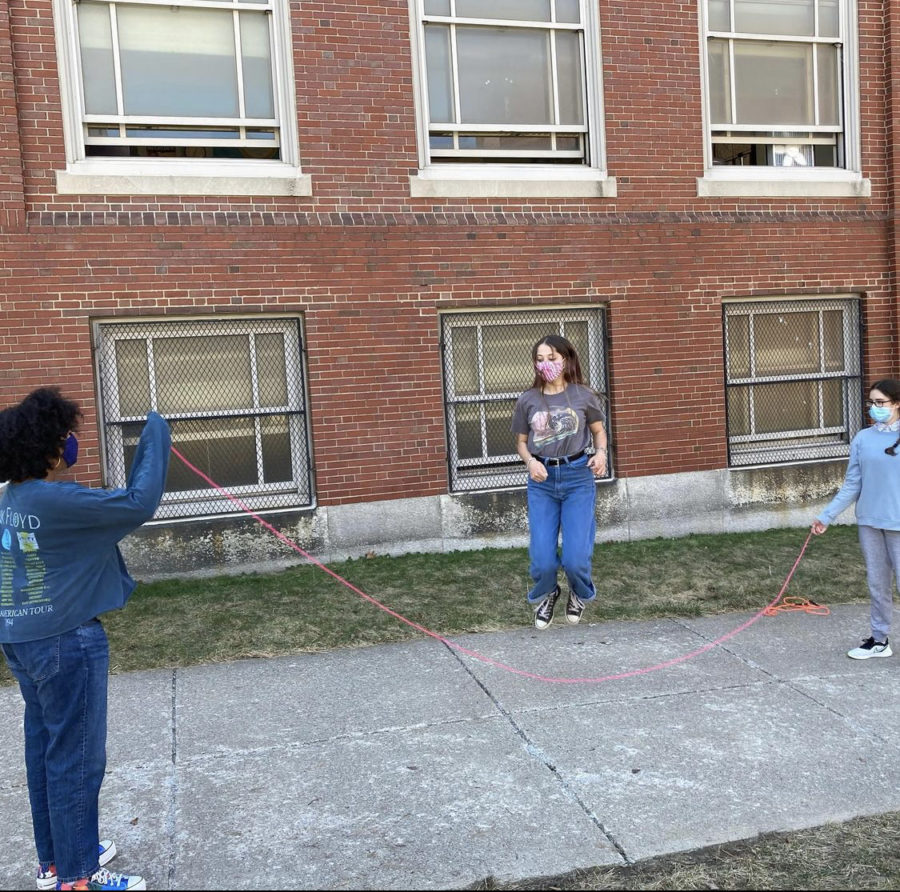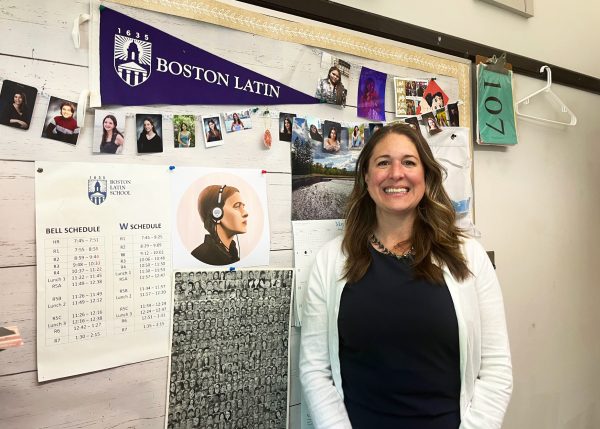Hybrid Hits the Ground Running
After an entire year of remote learning, Boston Latin School students, equipped with masks and hand sanitizer, returned to campus to begin hybrid learning in March.
Students who have chosen to opt into the hybrid model were divided into two cohorts, A and B, dictating which two days throughout the week they would attend school in-person. During their assigned in-school dates, students scan into school with their OneCard, remain in their homerooms and attend classes virtually via school-distributed Chromebooks.
As a way of deterring students from spending excessive time on screens, BLS has also incorporated a half-hour “Wellness Block” into the schedule. During this period, students have options to spend time outside, in the gym or in the library before or after their lunch period. Filipe Madrona (IV) finds that this block is essentially a recess period. “They give out sports equipment and you’re able to socialize. There’s also staff to monitor the area.”
As a result of the unprecedented nature of hybrid learning, there have been certain complications that the administration has been working to fix. In particular, internet issues have been prevalent throughout the building, causing difficulties for both students and teachers. Because everyone in the building is using the same WiFi, online functionality is often reduced.
For teachers, this means that schedules and class structures can be harder to coordinate. Biology teacher Ms. Paula Guzman states, “The Internet periodically glitches or goes really slow, so that makes it a little harder to plan accordingly.”
Furthermore, for sixies and B-sies who have had little experience interacting with the school itself, adapting to hybrid means learning where classrooms, bathrooms and the dining hall are located. Madrona, however, a B-sie himself, finds that members of the faculty have been extremely accommodating to whatever questions he or his classmates may have about the school or hybrid learning.
Despite the potential inconveniences of the hybrid model, meeting teachers and classmates in-person has been an exciting and unique experience, for students like Mark Snekvik (V). “I’ve enjoyed just talking with different teachers, and also seeing people I know from lunch. […] It also makes me look forward to normal school that much more.”
Even with such benefits, many students, especially upperclassmen, have decided to continue with remote learning. For Ange Najam (III), hybrid learning means that she, along with many other BLS students who take public transit to school, would have to wake up at the crack of dawn. “Remote school is more relaxing, because I [don’t] have to wake up at 5:00 A.M. for a two-hour train ride.” Staying at home can also be less restricting since students do not have to worry about wearing masks and aligning with social distancing guidelines as they would in-person.
Furthermore, since upperclassmen have already had the experience of attending BLS under normal circumstances, they are less likely to choose hybrid learning for the sake of experiencing the school, unlike sixies and B-sies.
The successful initiation of hybrid learning required a great deal of planning. Through adhering to district and state guidelines and relying on periodic surveys gauging hybrid learning turnout, BLS administrators were able to create procedures that ensured the safety of those returning to school. Assistant to the Head of School, Ms. Martha Pierce, emphasizes the importance of adaptation: “As we transition from one phase to another, we have had to adjust, rethink and refine pretty much all of our practices.”
Some of the practices BLS has been instituting include ensuring a ubiquity of hand sanitizer, using noticeable signs to manage traffic within the school building, opening windows for increased air circulation and adjusting seating to comply with social distancing guidelines.
The effectiveness of these practices, however, depends mostly on the behavior of the students and faculty. Fortunately, all students seem to be abiding closely by the regulations so far. Ms. Guzman states, “I’ve never had any students in my class try to take their mask off. […] I think everybody’s taking it seriously because they understand [the responsibility they bear to prevent the spread of COVID-19 and] because we’ve been doing it for so long.”
Regardless of what learning model students have chosen, the introduction of hybrid learning and its general success ensures that, along with many other institutions, BLS is slowly but steadily approaching a world of normal human interaction.






